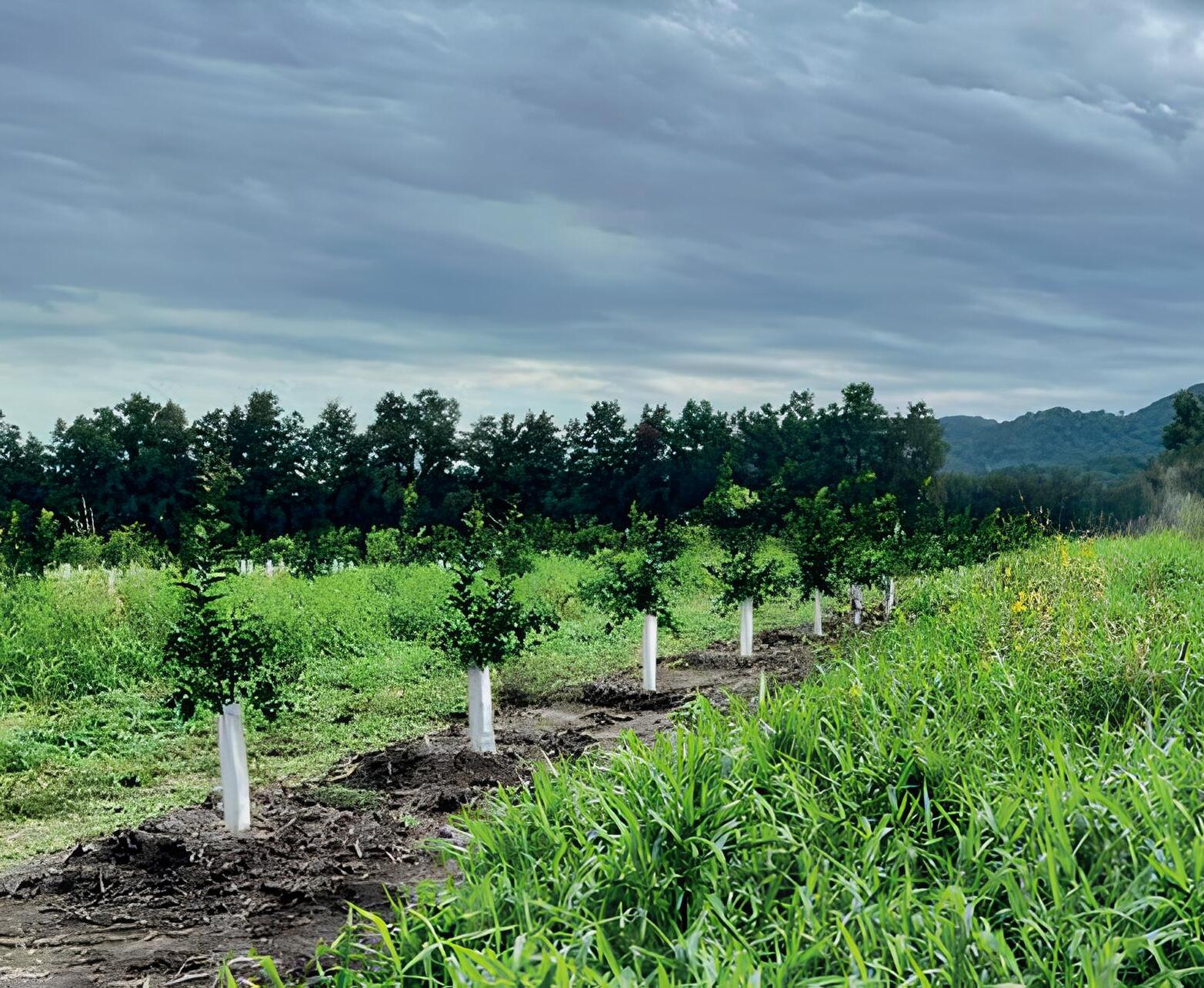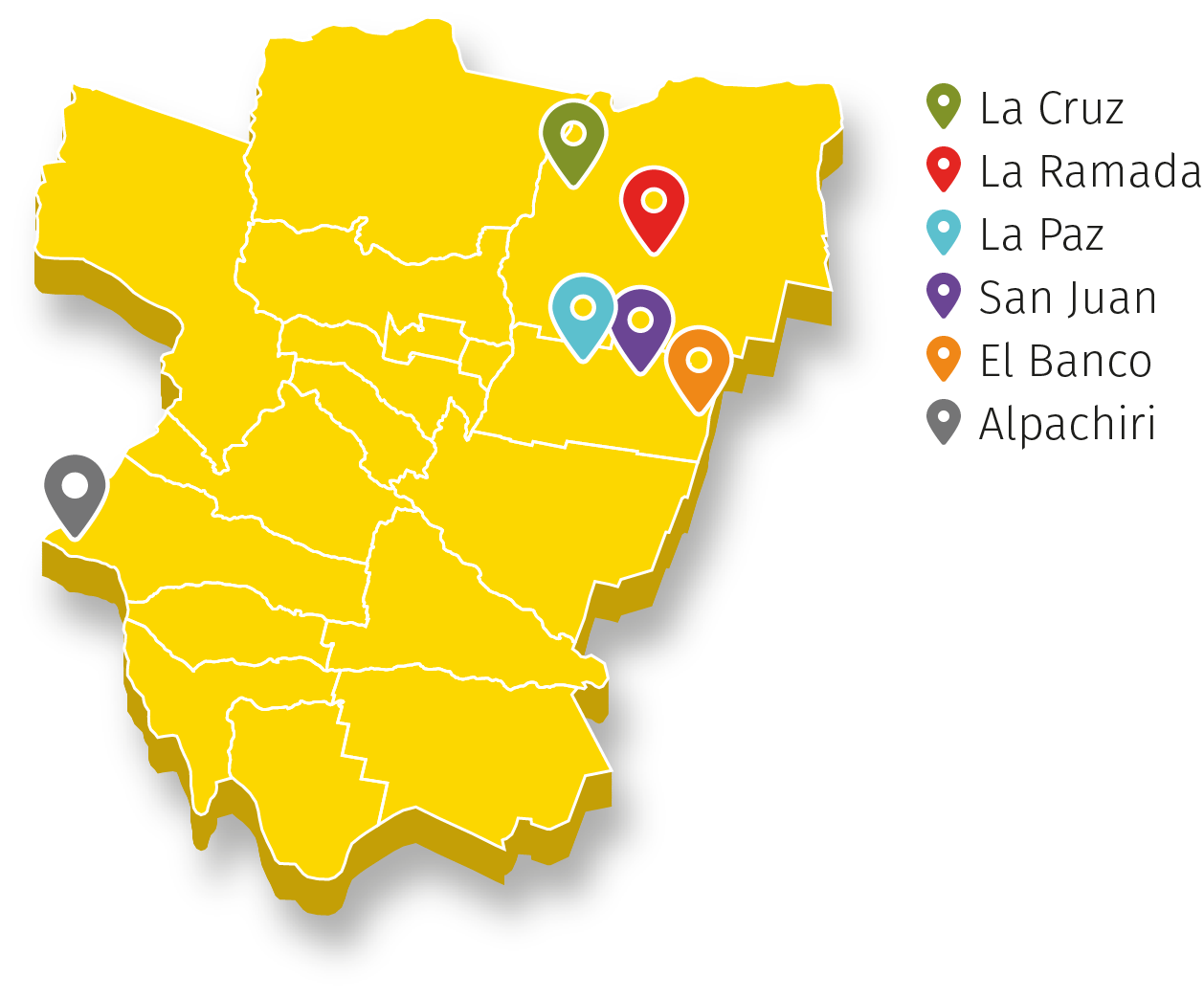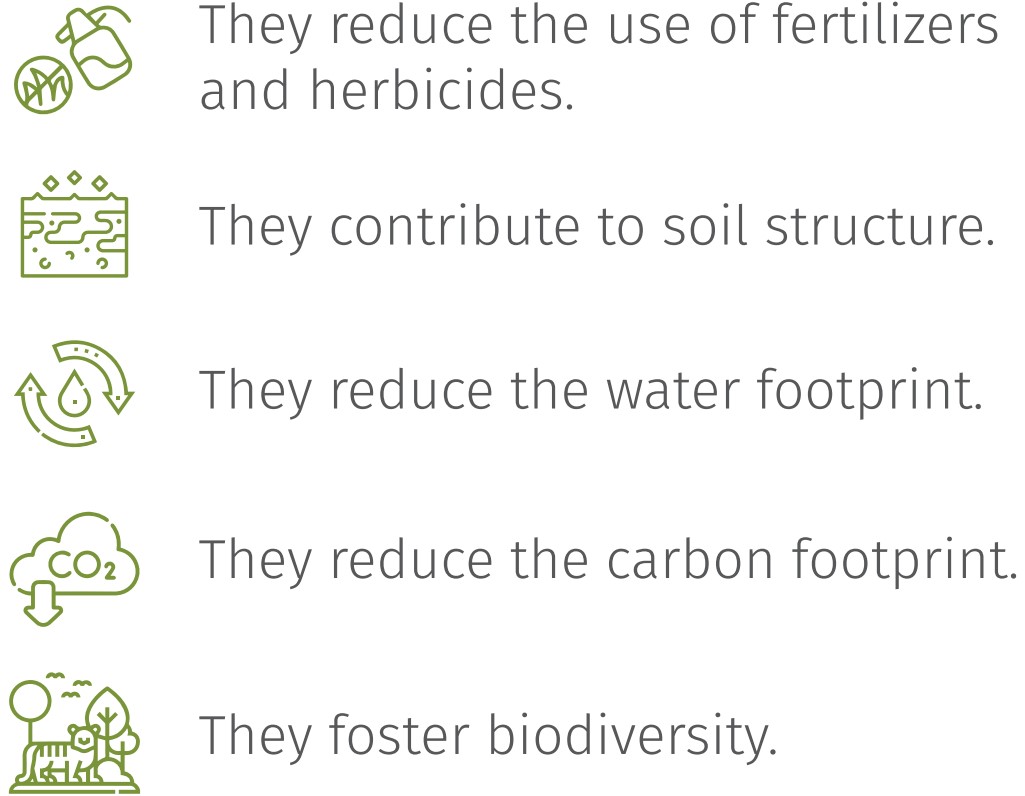Service Crops: Sustainability Allies
Download the articleThe constant search for innovative ideas made us introduce service crops in our citrus orchards in order to enhance efficiency and foster sustainable practices.
In 2022, we started to implement service crops, and we aim at assessing the effects of their use in citrus plantations of different ages and at different times in the crop cycle, taking into account biological and agronomic indicators.
“We will spend three years in this assessment. Together with various engineers who are in charge of the follow-up, we are conducting some tests in closely defined areas, one test in each Citrusvil’s production area – north, centre and south of Tucumán –. Once the first cycle ends, we will measure the soil physiological and morphological parameters in order to check if the soil structure has benefited from such practice and quantify such benefits. With this information, we will make a future decision to introduce these service crops in what we call ‘trail,’ the area in between plants”, stated Juan Altamiranda, Primary Production Manager.
These practices are being developed in the following orchards: La Cruz, La Ramada, La Paz, El Banco, San Juan and Alpachiri. All of them have different characteristics. In some cases, they are orchards which have young plants (one-to-three-years old). In other cases, they are transition plots, where the lemon plantations were eradicated for having reached their lifespan. Finally, in the last group we find orchards under organic production.
In addition, for each plot where service crops are introduced, there is a twin plot which works I as a “control plot” in order to compare results.

What Are Service Crops?
Service crops (SC) are key in regenerative agriculture practices because of their numerous benefits for ecosystem health. In order to introduce them, a crop “consociation” takes place. In this case, Citrusvil chose different types of barley, oats, sweet clovers and radishes, and they were placed in the “trail”.
What Are Service Crops for?
Service crops help in the restoration of deteriorated soils and bring benefits in terms of structure, nutrients, and the morphological conditions which make the land more suitable for use. This enables us to become less dependent on exogenous fertilization systems and reduce the amount of water and agro-chemicals used, thus reducing environmental impact and costs.
Agricultural practice affects land either by altering soil characteristics, water tables or by producing greenhouse gases.
That is why we work on the introduction of practices, such as service crops, which help counteract such effects.

Benefits of Service Crops

The Importance of Innovation
At Citrusvil, we also choose to grow “vertically” in order to be more efficient in each of the production tasks. Taking into account the growth in the citrus activity as a result of applied technology, we look for technologies which were originally meant for other sectors and adapt them.
“We have a young team which is willing to contribute ideas and look for alternatives to each task performed at the field, and we actively participate in the Innovation Committee”, states José Taddei, Head of Primary Production.
Towards Continuous Improvement
Citrusvil’s Primary Production team focuses on looking for new production methods characterized by increasingly sustainable practices, and tries to keep up to date in terms of the market. A great amount of such information is obtained when the engineers go to agricultural events, where they get ideas and then analyze them to adapt them to the citrus activity.
“Sometimes we manage to develop them locally; others, we get in touch with suppliers abroad to introduce the new tools”, explains Altamiranda.

Juan Altamiranda
Primary Production Manager

José Taddei
Head of Primary Production

David Weber
Northern Zone Manager

